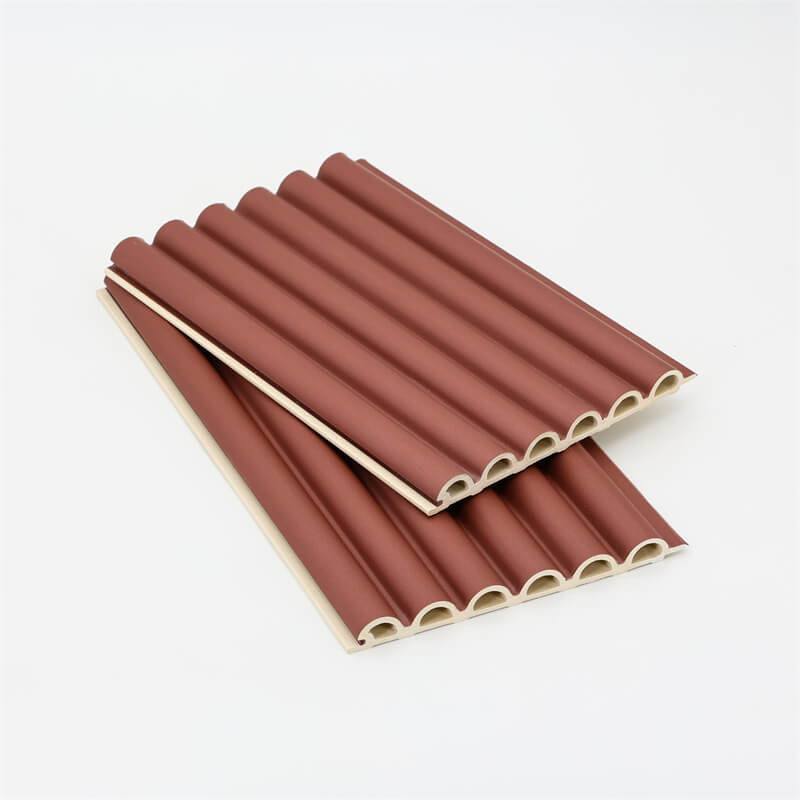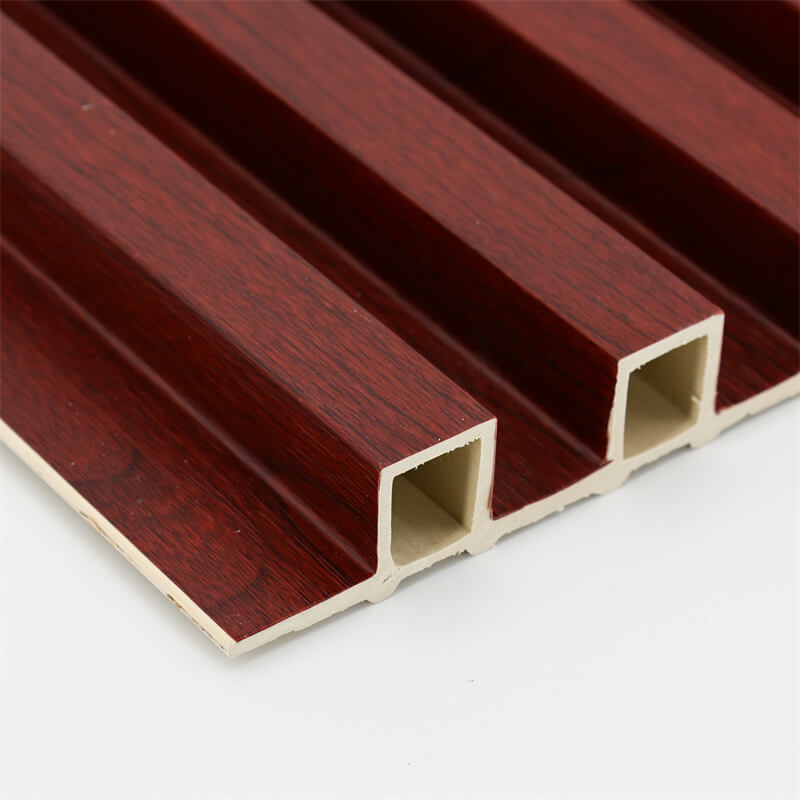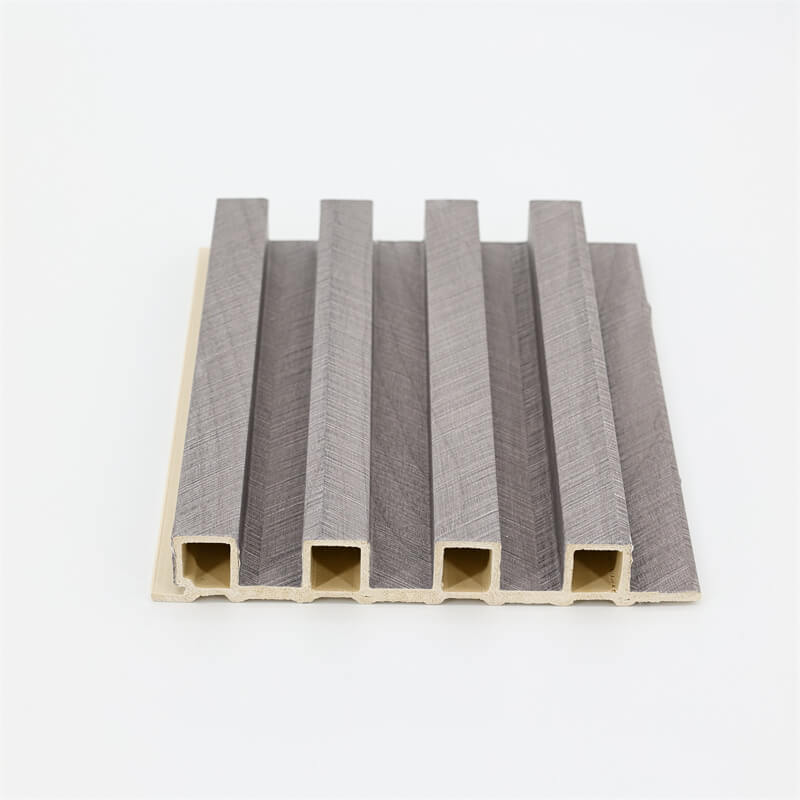
In the world of interior and exterior design, wall panels have become an increasingly popular choice for enhancing aesthetics and functionality.
Among the various materials available, Wood-Plastic Composite (WPC) wall panels have emerged as a leading contender, captivating the attention of designers, architects, and homeowners alike.
This essay delves into the composition of WPC wall panels, exploring the unique features and advantages that set them apart from other materials.
By understanding the composition of WPC wall panels, we can appreciate their outstanding characteristics and the reasons behind their growing popularity in the construction and design industry.
The WPC Composition: A Fusion of Wood and Plastic
WPC, or Wood-Plastic Composite, is a versatile material that blends the natural characteristics of wood fibers with the durability and versatility of plastic polymers.
This combination results in a product that surpasses the individual qualities of wood and plastic, making it ideal for various applications, including wall panels.
1.1. Wood Fiber Component
The wood fiber component in WPC wall panels is typically sourced from waste wood materials like sawdust, wood chips, or wood shavings.
These natural wood fibers provide several beneficial properties, including:
a) Strength and Stability: Wood fibers lend structural strength and stability to the WPC composite, allowing it to withstand external pressures and resist deformation over time.
b) Aesthetic Appeal: The presence of wood fibers imparts a natural appearance to the wall panels, making them visually appealing and suitable for both contemporary and traditional designs.
c) Environmental Advantages: By utilizing waste wood materials, WPC wall panels contribute to sustainable practices and reduce the demand for virgin wood, thus easing the strain on natural forests.
1.2. Plastic Polymer Component
The plastic polymer component in WPC wall panels is typically made from high-density polyethylene (HDPE), polyvinyl chloride (PVC), or polypropylene (PP).
The addition of plastic polymers offers several advantages, including:
a) Water and Moisture Resistance: Plastic polymers are naturally resistant to water and moisture, making WPC wall panels ideal for both interior and exterior applications, including bathrooms and kitchens.
b) Rot and Decay Resistance: Unlike natural wood, the plastic component in WPC wall panels makes them immune to rot, decay, and insect infestation, increasing their lifespan and reducing maintenance requirements.
c) Enhanced Durability: The plastic component provides extra durability, ensuring that the wall panels remain intact and retain their appearance even under harsh weather conditions.

WPC Wall Panels vs. Traditional Wall Cladding Materials
Understanding what sets WPC wall panels apart requires a comparison with traditional wall cladding materials like solid wood, natural stone, ceramic tiles, and vinyl.
2.1. Advantages Over Solid Wood
While solid wood wall cladding exudes a timeless charm, it comes with several limitations.
Unlike WPC wall panels, solid wood is susceptible to moisture-related issues, such as warping and splitting.
Additionally, solid wood requires regular maintenance, including sealing and staining, to preserve its appearance and structural integrity.
WPC wall panels offer the aesthetic appeal of wood without these downsides, making them a more practical choice for many applications.
2.2. Advantages Over Natural Stone and Ceramic Tiles
Natural stone and ceramic tiles are renowned for their elegance and durability.
However, they can be heavy, difficult to install, and vulnerable to cracking or chipping.
WPC wall panels are lightweight, easy to handle, and less prone to damage, providing a cost-effective alternative that replicates the look of stone or tiles without the associated challenges.
2.3. Advantages Over Vinyl Wall Cladding
Vinyl wall cladding, while affordable, can lack the authenticity and warmth offered by WPC wall panels.
Vinyl is also more susceptible to fading and may not withstand extreme weather conditions as well as WPC. In terms of aesthetics and durability, WPC wall panels have a clear advantage over vinyl.

Unique Features and Benefits of WPC Wall Panels
WPC wall panels stand out due to several distinctive features and benefits that cater to the needs and preferences of modern-day consumers and designers.
3.1. Design Versatility
WPC wall panels come in a wide range of colors, textures, and patterns, providing designers with the freedom to unleash their creativity.
Whether one desires the look of natural wood, a sleek modern finish, or a textured appearance, WPC can be customized to meet diverse design aspirations.
3.2. Easy Installation
Compared to other wall cladding materials, WPC panels are designed for straightforward installation.
Many WPC wall panels feature a simple interlocking system, eliminating the need for complex tools and reducing installation time and costs significantly.
3.3. Low Maintenance
One of the standout advantages of WPC wall panels is their minimal maintenance requirements.
Unlike natural wood, which demands periodic staining and sealing, WPC only requires regular cleaning to maintain its appearance.
Its resistance to rot, mold, and insect infestation ensures that the panels stay pristine for an extended period, making WPC a cost-effective long-term investment.
3.4. Environmental Sustainability
As eco-consciousness continues to grow, the demand for sustainable building materials has increased.
WPC wall panels contribute to environmental preservation by utilizing recycled wood fibers and reducing plastic waste.
Furthermore, their longevity and low maintenance requirements translate to fewer replacements and less overall environmental impact.
Wood-Plastic Composite (WPC) wall panels have undoubtedly carved their niche in the construction and design industry due to their unique composition and exceptional features.
The fusion of wood fibers and plastic polymers results in a material that combines the beauty of wood with the durability and low maintenance properties of plastic. When compared to traditional wall cladding materials, WPC stands out as a superior choice in terms of versatility, ease of installation, and environmental sustainability.
WPC wall panels address the limitations of solid wood, natural stone, ceramic tiles, and vinyl, offering an ideal balance between aesthetics and practicality.
The design versatility, easy installation, low maintenance, and eco-friendliness of WPC make it an attractive option for interior and exterior wall cladding,
appealing to both homeowners and professionals in the architecture and design industries.
As the demand for sustainable and visually appealing building materials continues to rise,
WPC wall panels are expected to maintain their prominence as a go-to choice for enhancing the ambiance and functionality of various spaces.
